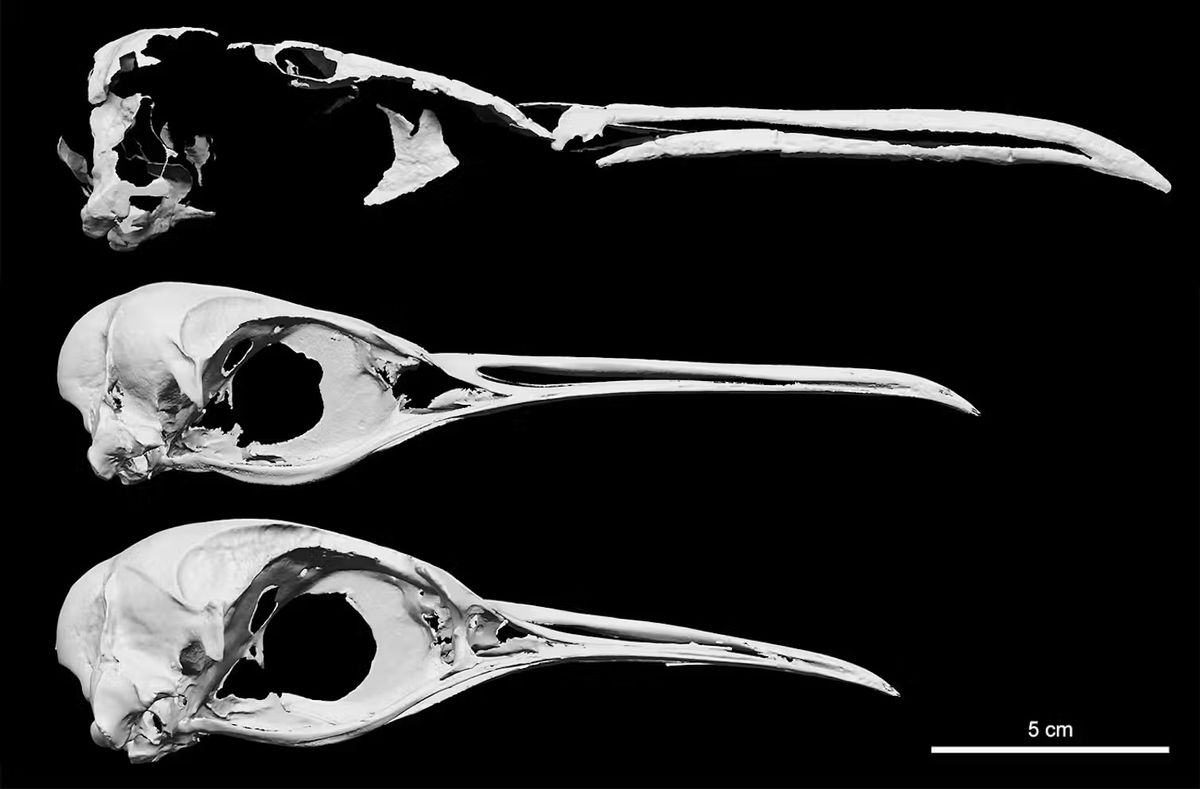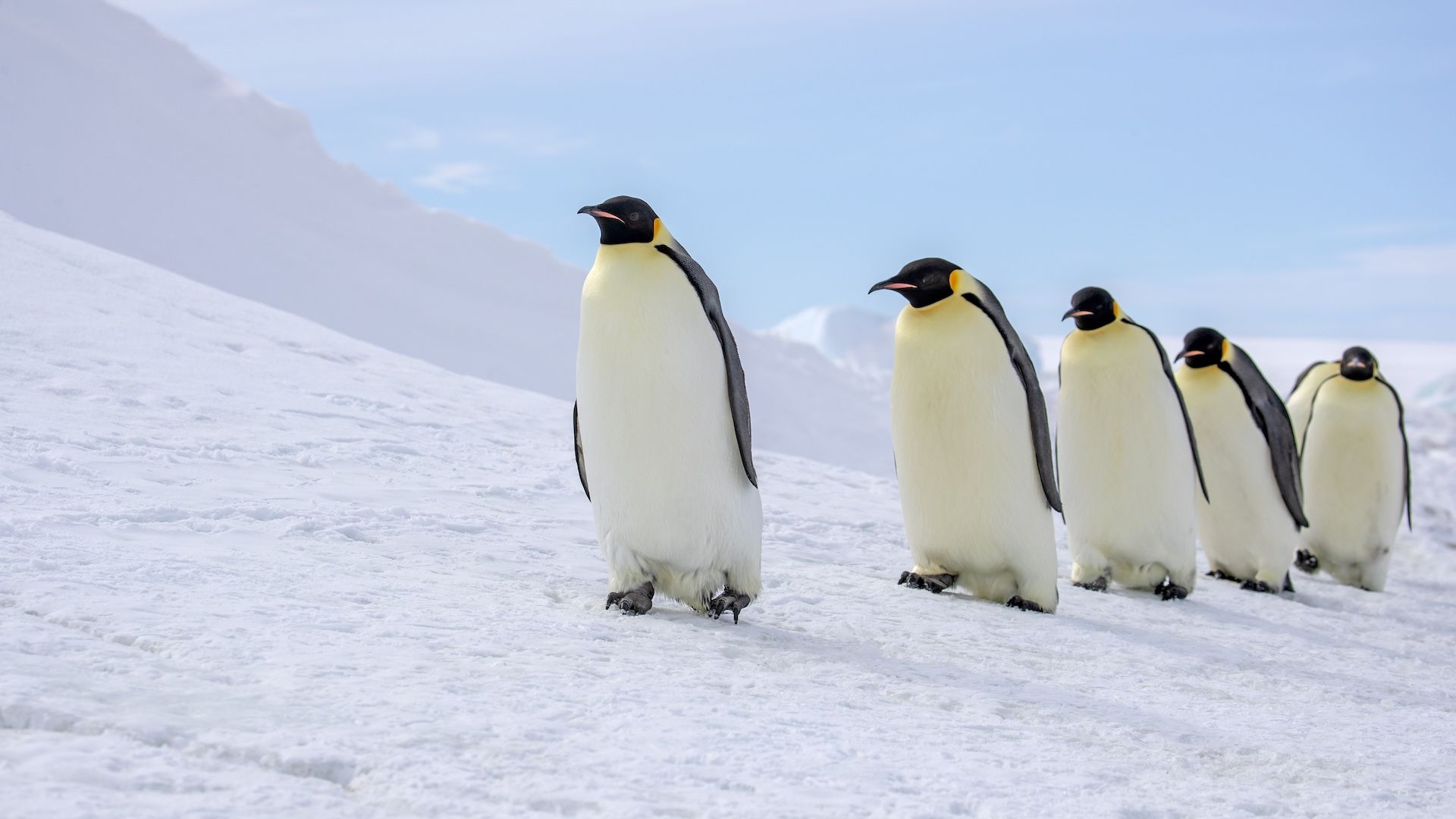🐧 The mystery of the giant penguin that inhabited New Zealand 3 million years ago
Follow us on Google News (click on ☆)
The key to this revelation lies in an exceptionally well-preserved fossilized skull, discovered on the Taranaki coast. This anatomical piece, described in a study published in Journal of Paleontology, has impressive dimensions: 31% longer than that of a modern emperor penguin. The animal must have had a particularly robust and elongated beak, resembling more the features of the current king penguin, but with a much larger size.

Comparison of the fossil skull of the extinct giant penguin (top) with those of a king penguin (middle) and an emperor penguin (bottom), showing significant morphological differences
Credit: CC BY-NC-ND
This period corresponded to a time of global warming when temperatures exceeded pre-industrial levels by 3°C. New Zealand then hosted a surprising marine ecosystem, where tropical species such as boxfish and monk seals coexisted with these large penguins adapted to colder waters. The latter evolved in waters reaching 20°C, a temperature much higher than that tolerated by their modern descendants.
The mystery of their extinction deepens when considering that the climate cooling that occurred 2.58 million years ago did not affect other local penguin species. Researchers are exploring the hypothesis of giant aerial predators like the Haast's eagle and Forbes' harrier, which may have targeted the exposed colonies of these large penguins. Unlike smaller species that nested discreetly in burrows, these giants probably formed visible colonies along the coasts.
This discovery challenges our understanding of the ecological limits of penguins and opens new perspectives on their adaptability. As the current climate warms, studying these past ecosystems helps us anticipate future transformations of marine habitats and the geographical redistribution of species.

Modern penguins thrive in cold climates, raising questions about the causes of their New Zealand ancestor's disappearance
Credit: Richard McManus via Getty Images
Periods of climate warming in Earth's history
Our planet has experienced several episodes of climate warming long before the industrial era. The Miocene and Pliocene, 23 to 2.6 million years ago, were marked by global temperatures significantly higher than today. These conditions allowed the expansion of tropical ecosystems to higher latitudes.
These warm periods were mainly due to higher concentrations of greenhouse gases in the atmosphere, combined with different continental configurations and modified ocean currents. Polar ice caps were reduced and sea levels could be several meters higher than currently.
Understanding these past climates comes from the study of ice cores, marine sediments, and fossils. These natural archives reveal how ecosystems reorganized themselves in response to these changes, offering valuable clues to anticipate future transformations.
Species then showed great ecological plasticity, occupying unusual niches compared to their current distribution. This flexibility could be crucial for species survival in the face of contemporary climate warming.
The evolution and adaptation of penguins
Penguins have a remarkable evolutionary history dating back more than 60 million years. Their ancestors were flying birds that gradually adapted to marine life, developing wings transformed into efficient flippers and waterproof plumage.
Throughout their evolution, penguins have undergone significant diversification, with species reaching impressive sizes. The largest known fossil penguin, discovered in Antarctica, measured nearly 2 meters (6.5 feet) tall, much larger than the largest current species.
Their adaptation to cold is the result of millions of years of evolution in polar and subpolar environments. Their dense plumage, insulating layer of fat, and specialized circulatory system allow them to withstand extreme temperatures.
This New Zealand discovery reveals that some giant penguins were capable of adapting to more temperate climates, broadening our understanding of their ecological plasticity and their ability to colonize various marine environments.